The first attack of the "land armadillos"
However, due to the low technical reliability of these tanks, only 18 combat vehicles participated in the attack, the rest were out of order due to malfunctions or were stuck in the marshland. However, in general, the experience was successful and became an occasion for the further development of the tank industry. In the future, tanks will become an integral part of the armed forces of developed countries, its shock part.
Prehistory First tanks
The main problem in the history of the development of tank building before the First World War was the lack of motivation and lack of understanding of the possibilities of using armored vehicles. As early as the 15th century, Leonardo da Vinci wrote about the basics of using armored carts: “We will build closed chariots that penetrate enemy lines and cannot be destroyed by a crowd of armed people, and behind them infantry can follow without much risk and all baggage.” However, in practice, no one seriously took "expensive iron toys," as the British Secretary of War called the prototypes of tanks at the time.
At the end of 1914 - the beginning of 1915, the First World War passed into the positional stage. The warring parties dug into the ground and closed with kilometers of barbed wire. Long-term fortifications were also actively built. Each inch of land was shot by artillery and machine guns. Therefore, the war of maneuver began the war was over. Promotion for a couple of kilometers paid thousands of lives. One machine gunner could put hundreds and even thousands of people. To break through the powerful defense of the enemy, it was necessary to concentrate a large number of artillery, pull the troops. Enemy intelligence usually revealed such training. And the defending party managed to prepare, transfer additional forces and means, accumulate reserves. While the attackers broke through the first line of defense, the defending side managed to pull up reserves to a dangerous place and to restore the situation with strong counterattacks. Thus, attempts to break through such a defense led to mass casualties and minimal results (as during the Verdunskiy meat grinder).
As a result, it became necessary to create a means that can overcome enemy defenses, cover the infantry with armor and support it with fire. The armored train was such a mobile armored vehicle. But the use of armored trains was limited by the need to use railway tracks. The next step was the use of conventional cars, which were installed machine guns and light guns. Numerous and very diverse armored cars were already operating on the fronts, however, the passage of heavy armored cars left much to be desired. In addition, they were poorly armed and armored. Reinforcement and reinforcement significantly increased the weight of the car, which, along with the wheel suspension and weak engines, made armored vehicles passable to zero. Therefore, military engineers suggested using a tracked chassis instead of a wheeled automobile chassis. The road wheels evenly distributed the pressure on the soil, which significantly increased the permeability on the soft ground. Tractors with tracked engines by that time were already actively produced in various countries (the USA was the leader), and their technologies were generally tested.
In the French and English armies, almost at the same time, the idea of creating a special machine for breaking wire fences was born. It is believed that the primacy in this matter belongs to obscure French soldiers, who took the tractor, welded to its nose at an angle something like a sharpened rail, and with the help of the equipment so equipped and even not armored, broke through the barriers and occupied the enemy fortification.
In England, at the same time, a “bridge tractor” was being developed for overcoming wire obstacles and a “tracked armor shield for infantry”. So, back in November 1914, Captain Tullock, manager of the powder company in Chilworth, sent a proposal to the Imperial Defense Committee to build a land cruiser. In December of the same year, Admiral Bacon developed a “bridge tractor for overcoming barriers”, and a little later, Commodore Murray Sueter attempted to advance a self-propelled infantry armor shield on a tracked platform. However, these developments were considered unpromising, but prompted the British military to the idea of creating a fully armored armed tracked vehicle. The French General Staff also concluded that for such purposes it is better to close the tractor with armor.
The military turned to the French company Schneider, which produced various weapon. However, for an armored vehicle capable of breaking through enemy fortifications, a reliable undercarriage was needed. The best tractor at the time, it was believed, was produced by the American Holt Manufacturing Company. The French sent two of their best engineers Brillier and Duhamel to England, whose armed forces just bought the American "Holts." Eugène Brillier, a brilliant engineer, after looking at the American tractors, concluded that these powerful machines can and should not only be booked, but also equipped with artillery weapons. At first it was decided to use the Holt Baby model as a chassis base. The tractor was closed with two armor plates on the sides and two converging at an acute angle in front. Top left open.
9 December 1915, on trial in Suena, a prototype of an armored tank on the Holt chassis was demonstrated to representatives of the French army. Among the spectators were General Philippe Pétain and an artilleryman and engineer, Colonel Jean-Baptiste Eugene Estienne. The test results of the tank were good. The car showed remarkable mobility in a difficult landscape. However, the length of the machine was not enough to overcome the enemy trenches, which required the creation of longer tracks for the French design of the tank. Therefore, the French decided to use the chassis not Baby Holt, but longer 75 l. with. Holt tractors.
December 12 Estienne presented to the French High Command a plan to form an armored unit armed with tracked vehicles. This plan was met with approval and Commander-in-Chief Joffre supported the production of 400 tanks. The actual order for 400 tanks SA1 Schneider was made 25 February 1916 of the year, at a price of 56 thousand French francs per item. The French decided to use the chassis not Baby Holt, but longer 75 l. with. Holt tractors. However, with the supply of a sufficient number of new tractors and spare parts for them from the United States, difficulties could arise, therefore in the future production they returned to the Baby chassis.
A new Schneider tank was made like this: the ready-made tractor was placed in a steel structure 6,32 meters long, 2,05 meters wide and 2,3 meters high. "Tank" was protected 11-mm bronelistami and weighed over 14 t. Such bronetraktor Schneider carried a 220 liters, 75-millimeter gun system "Blockhouse-Schneider" two 7,92-millimeter gun "Hotchkiss" 90 shells, 3840 rounds , six crew members and a cage with homing pigeons for communication. Engine power of all 60 l. with. provided maximum speed in 8 km / h. The awkward feature of the Schneider was a protrusion on the frontal part of the hull, which was originally designed to collapse barbed wire, but in practice often led to the overturning of the tank.
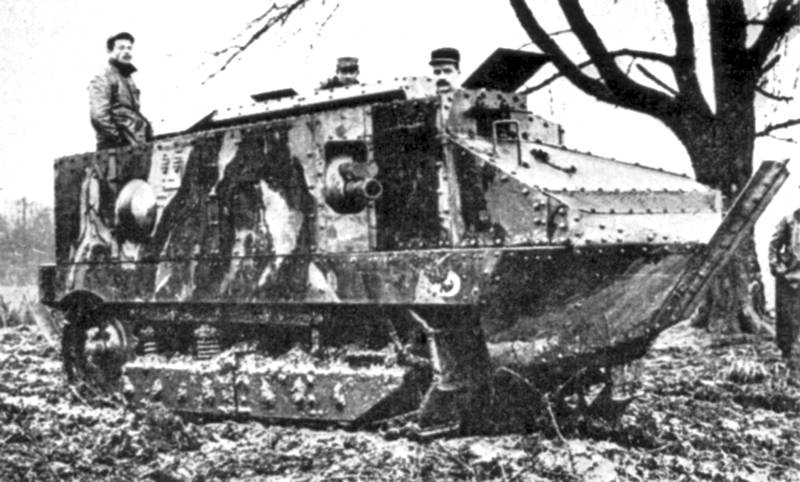
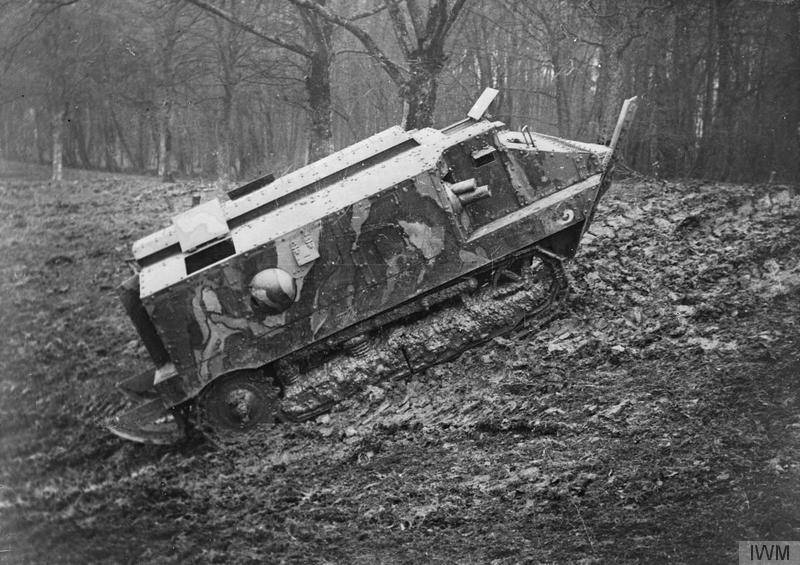
French tank CA-1 Schneider
In Great Britain, the creation of the armored vehicle was supervised by the Admiralty, or rather, the “Committee of Land Ships”, specially formed in February 1915 for this purpose. It was created by Minister of the Sea W. Churchill. The committee consisted mainly of naval officers and engineers. The establishment of this institute was also overseen by the Naval aviation a service that was very interested in armored fighting vehicles to guard its coastal bases. The head of the committee was Eustace Tennyson D'Encourt, Director of the Marine Construction Department. The committee was considering a proposal to create an armored vehicle for breaking trenches. Much was based on the ideas of the “war vehicle” of the pre-war years. There were already armored cars in Britain. Another source of ideas was Herbert Wells' 1903 Land Armadillos.
From the beginning in 1915, an experienced Little Willie tank, “Little Willie” (“Little Willie”), was developed based on a tracked tractor. The machine is equipped with an engine Daimler power in 105 l. with., suspension with two fuel tanks located at the rear, which leaves enough space under the proposed tower with a two-pounder Vickers gun. Up to six machine guns could be installed in the hull: Madsen machine guns were originally supposed, then they stopped on two Vickers 7,7-mm machine guns. The main gun had a large ammunition - up to 800 shots. The prototype did not have full steel armor, only a kind of "cap" of the plates, but the project suggested 6-mm armor coating. The crew consisted of a 4-6 person. The weight of the machine was more than 18 t. The main disadvantage of this tank was the small width of the ditch to be overcome, which made it unsuitable for use on the WWI battlefields covered with craters, trenches and various ditches. Therefore, it was decided to give the tank hull a diamond shape and track tracks placed on top of the hull contour.
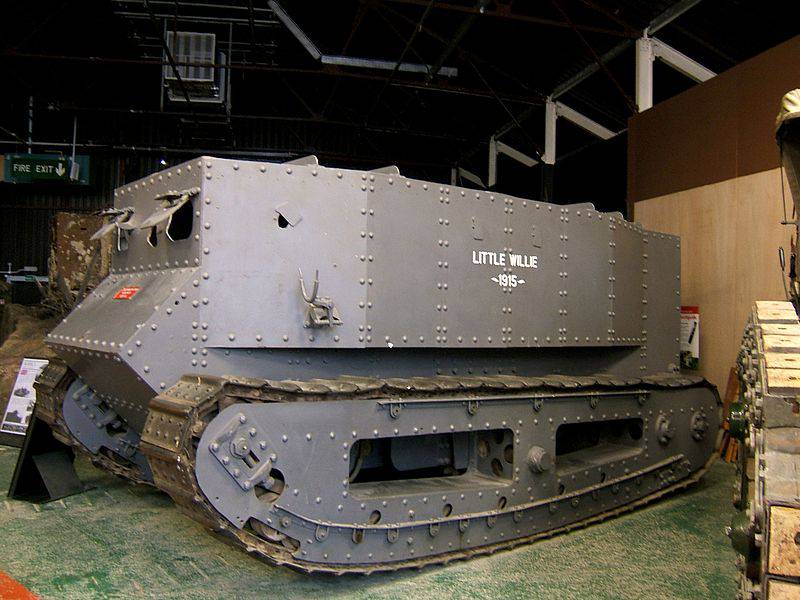
"Little Willy"
Thus, in the future, the British did not use the finished tractor chassis for their “land battleships”, but developed a completely original design with an eight-meter diamond-shaped armored hull. Such a design was supposed to give the greatest length of the caterpillar, which allowed to overcome wide trenches. The use of this scheme made it impossible to place weapons in the towers (due to too high a height). Therefore, the main armament was placed in the inside of the body, in the sponsons (in the side projections) on the sides of the tank. The engine — a Daimler / Knight 6 cylinderless gas-cooled carburetor engine of water cooling — passed through most of the length of the tank, taking up the bulk of the interior space. The engine developed maximum power in 105 l. with. Gasoline from fuel tanks suspended from the tank ceiling was fed to the engine by gravity. With a strong tilt of the hull the gas supply stopped, and then one of the crew members had to pour the fuel from the tank into the carburetor. The temperature in the case rose to 50 degrees. People fainted from exhaust fumes and powder smoke. Therefore, a gas mask, or respirator included in the standard equipment of the crew. The weight of the tank was 27-28 t.
Along the sides of the engine and transmission were the aisles and the sponsons who served as weapons, and there was a control section at the frontal end of the hull. The crew consisted of eight people. The tank commander, usually a junior lieutenant or lieutenant, who also served as the shooter from the frontal machine gun and sometimes the assistant driver and the driver himself were located in the control compartment on the left and on the right, respectively. In each of the sponsons, there was a gunner and a loader (on "males") or two machine gunners (on "females"), and in the aisles in the aft half of the hull there were two driver assistants. Sometimes a ninth member was added to the crew, whose task was, while in the stern of the tank, at the radiator, to defend the stern sector of the tank from the enemy’s infantry with personal weapons.
The new tank was called the Mark I (sometimes called the “Big Willy”). The tank was produced in two versions - “Female” (only with machine-gun armament) and “Male” (with a machine gun and two 57-mm cannons). They planned that the "males" would mostly fight with machine gun nests, and the "females" - with the living force of the enemy. Later, they recognized that this division was unsuccessful, and they began to install a single machine gun and cannon armament on all tanks — the 2 cannon and the 4 machine gun.
But in the first stage, the main armament on the “male” tanks was two rifled 57-mm guns of the Six Pounder model, Single Tube — the land version of the rapid-fire naval guns adopted for the 1915 year developed in 1885. The guns were placed in the tank sponsons on thumbnail installations, with rotating cylindrical shields covering the embrasure of the sponson with a rotating part. Ammunition of guns was 334 unitary shot. Behind the guns in the sponsons of the "males" were placed two 7,7-mm machine guns "Hotchkiss" M1909. In addition, on both types of tanks, one such machine gun was located in the frontal part of the tank and served by the commander, and sometimes another machine gun was installed in the stern of the tank. All Hotchkiss machine guns were removable and fired through the embrasures, which were closed with armored covers the rest of the time. On the “female” variant, the place of 57-mm guns and “Hotchkiss” machine guns in the sponsors was occupied by four 7,7-mm machine guns “Vikkers”. These machine guns were placed on tumbovi installations with rotary shields, similar to the installations 57-mm guns. Machine gun ammunition 5760 ammunition for "males" or 30 080 ammunition for "females". In addition, each crew member had a revolver, for firing of which in various parts of the tank there were ports with armored covers. Due to the low mobility of the tank and limited sectors of firing its main armament, the crew’s personal weapons were assigned an important role in the vehicle’s near defense. The forehead, sides and body of the case were covered with 10-12 mm armor, bottom and roof - 5-6 mm.
In February, 1915 passed the successful tests of the tank. The machine without any problems overcame ditches with a width of 4,5 m and walls with a height of 1 m, the fords to the depth of 1 m were not a problem for it. To prevent the tank from tipping back on steep climbs, a two-wheeled support cart was attached to its stern. True, the speed of the car was small - only 6 km per hour. The tank entered service in August 1916.
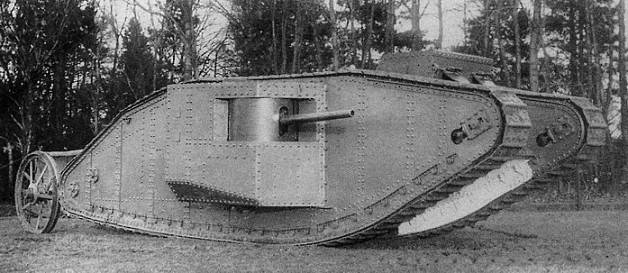
British tank Mark I ("male"). 1916 year
Mark I in camouflage coloring
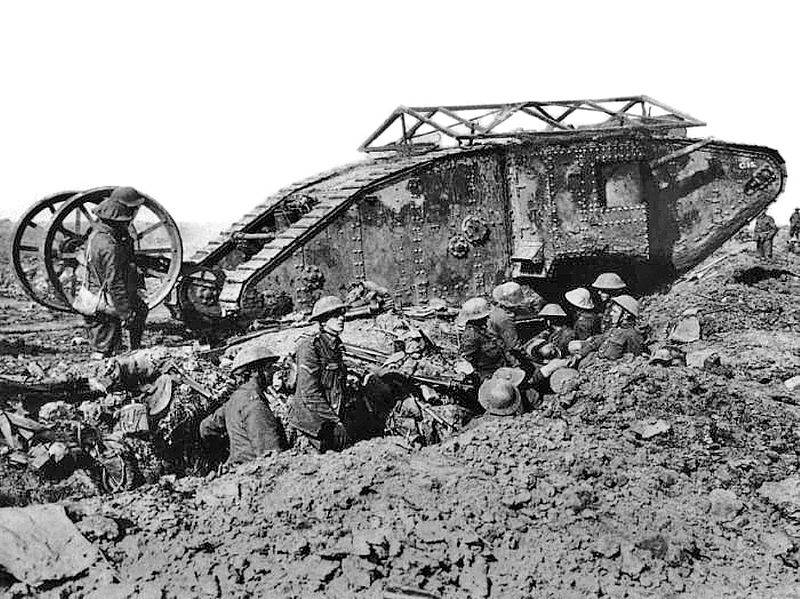
British tank in the Battle of the Somme
First attack
The extremely unsatisfactory pace of the offensive during the Battle of the Somme prompted the Allied Command to use a fundamentally new means of struggle - tanks. French armored tracked vehicles arrived at 5 September 1916 troops. However, the crews were not yet ready for them, because the combat use of the Schneider had to be postponed. The British vehicles, called the Mark I, were used by the British army in the 15 Somme battle on September 1916. This was the first ever tank attack.
In 5 hour. 30 min. English tanks went on the attack. Morning fog hid them from the eyes of the enemy. Unnoticed, they were able to get close to enemy positions. Before the Germans came to their senses, the steel "chariots" attacked the trenches. The roars of engines, shrouded in fire and smoke, they tore the barbed wire and brought down the dugouts. Tanks slowly crawled forward, causing confusion and panic. New weapons demoralized the Germans. The fight lasted until 10 hours. Despite the small number of vehicles, difficult terrain, the imperfection of the first tanks and poor interaction with the infantry, the machines showed a good result. Over the 5 hours of battle, the tanks broke through the front 5 km wide and 5 km deep.
During the battle, it turned out that the design of the tank was not sufficiently developed - only 49 came out of the 32 vehicles that the British prepared for the attack (17 tanks failed due to problems), and out of the thirty-two that started the attack, 5 was stuck in the swamp and 9 out of order for technical reasons. Nevertheless, even the remaining 18 tanks were able to advance deeper into the enemy defense by 5 km, and the British losses in this offensive operation turned out to be less than normal in 20 times. The tank overcame wire obstacles and trenches 2,7 meter wide. The armor kept hitting bullets and shell fragments. However, tanks did not maintain direct hits of projectiles.
Because of the small number of tanks, the German defense was not able to break through completely, but even such a clumsy fighting machine that had many weaknesses showed its great potential, and the psychological impact on the German infantry was enormous. In addition, the British later successfully used the tanks at the Battle of Cambrai (November-December 1917 of the year). The British threw the Royal Tank Corps into battle (3 brigades with a total number of 476 tanks) and ensured a few hours advance into the front by 9 km with minimal losses. This silenced the last skeptics and forced both sides to engage in the active formation of armored forces. Thus, it became clear that the tanks, as a type of military equipment, have a great future. So it happened. "War chariots" have become the leading type of military equipment of modern armies.
Interestingly, both the British and the French, for the secrecy of the transportation of their combat vehicles by rail, used the word meaning "tank", "tank" (English - tank, French - char d'assaut) to name them. In other armies, their names were fixed - "Panzerkampfvagen" PzKpfw (armored combat vehicle) among the Germans, among the French "shar de komba" (combat vehicle), among the Swedes - "stridrvagn" (combat vehicle), the Italians called "carro d'armato" (armed cart). But due to the fact that the British used their "land battleships" first, and also because this use was more successful, in most European languages for the designation of an armored tracked combat vehicle the English word - "tank" was fixed. The word "tank" has also taken root in Russia.
I must say that the first test of French tanks was less successful than the British. The French threw tanks into the breakthrough of 16 April 1917 of the year in the so-called. "Nivelles offensive." The position of the German troops moved 128 tanks. However, this time the Germans successfully used artillery and aircraft. In addition, in order to increase the cruising range, tanks with fuel were placed outside the French tanks, and the slightest hit made them ignite like torches. German artillery brought down such a barrage of fire on the French armored vehicles that some Schneider in the first rows literally scattered into small pieces. In the first detachment, 39 tanks were shot down; its commander was killed. The second detachment was noticed by German aviation and notified the command. Artillery also stopped the French armored vehicles. From 128 tanks from the battlefield returned only around 10. In general, the Offensive of Nivelles ("The Nivelles Massacre" or "Nivel's Meat Grinder") became a symbol of meaningless human sacrifices and made a heavy impression on the French army and society. The new commander Peten (he replaced Nivelle) even had to crush insurrections in the army (including unrest in the Russian expeditionary units). The new commander ordered the imposition of the death penalty for refusing to obey. This did not affect the development of the tank industry. Her perspective was obvious.
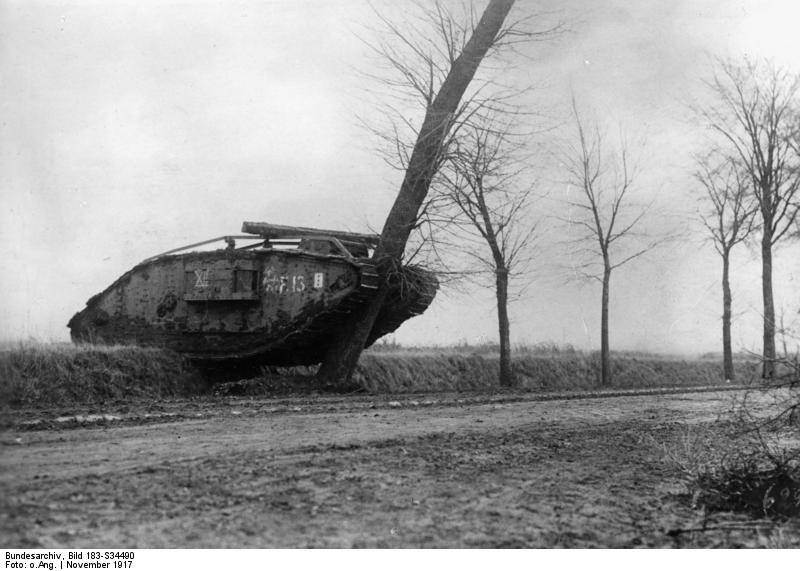
Battle of Cambrai Tank attack
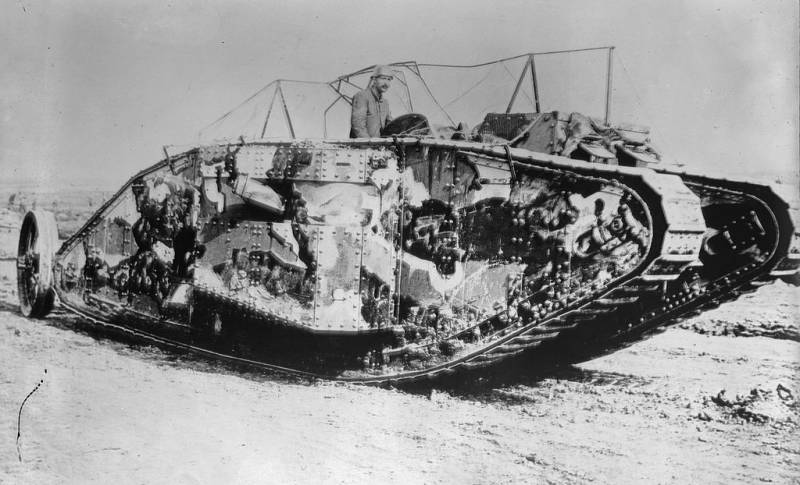
Information